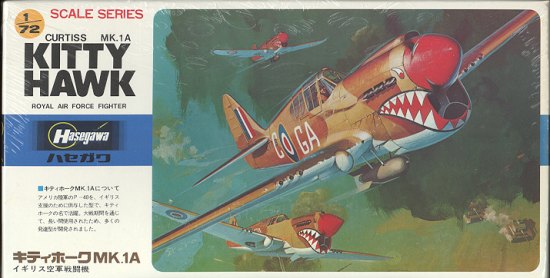
Hasegawa 1/72 P-40E Kittyhawk
|
KIT # |
2509 |
|
PRICE: |
MSRP $8.97 |
|
DECALS: |
see review |
|
REVIEW : |
|
|
NOTES: |
|

|
HISTORY |
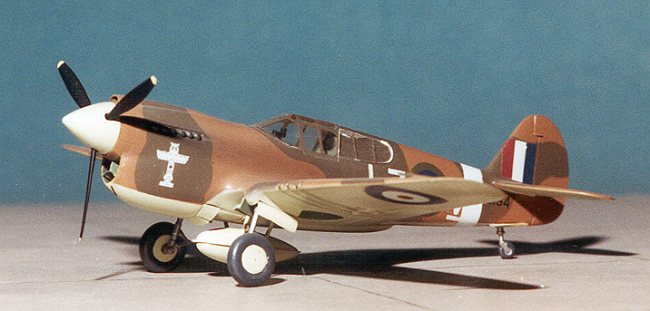
Call it a Kittyhawk or a Warhawk, it means the same thing; P-40E. While not the most produced version (that belongs to the P-40N), nor the most famous (that belongs to theP-40C), it is the one that most think of when the P-40 is mentioned. It was the first to be properly ready for war. It had six .50 cal machine guns, a reasonably powerful engine, protection for the pilot and the ability to carry an offensive load.
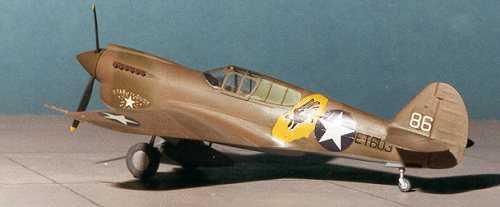 By the time
the P-40E reached squadron service, it was becoming clear that it's days as an
interceptor and fighter were nearing an end. It was clearly a very capable
fighter-bomber and served that role well and with distinction wherever it was
used. Not to say that it still couldn't operate well as a fighter. At lower
altitudes (say, below 15,000 feet), it was a very capable aircraft, as many of
its foes discovered. However, for escorting heavy bombers, it was a very poor
performer at the altitudes that the B-17s and B-24s had to fly.
By the time
the P-40E reached squadron service, it was becoming clear that it's days as an
interceptor and fighter were nearing an end. It was clearly a very capable
fighter-bomber and served that role well and with distinction wherever it was
used. Not to say that it still couldn't operate well as a fighter. At lower
altitudes (say, below 15,000 feet), it was a very capable aircraft, as many of
its foes discovered. However, for escorting heavy bombers, it was a very poor
performer at the altitudes that the B-17s and B-24s had to fly.
It shouldn't be surprising that the P-40 was one of the most produced American fighters of WWII with around 13,000 aircraft built. That number was exceeded by only the P-51 and P-47, respectively. Though not as prominent on the warbird scene as it used to be, there are still a number of them still flying.
|
THE KIT |
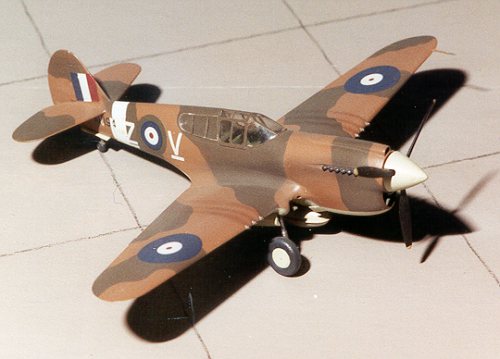 Hasegawa's
kit of the P-40 is really a very nicely done model. Designed in the early 1980s,
it has very nice engraved detail and very little flash. It has yet to be outdone
as it seems that the P-40E is not one of those planes that has been given much
attention in the 1/72 ranks. The only other 1/72 P-40E that I can think of are
one from Revell and another from Airfix. Neither one of them is up to the
standards of the Hasegawa kit.
Hasegawa's
kit of the P-40 is really a very nicely done model. Designed in the early 1980s,
it has very nice engraved detail and very little flash. It has yet to be outdone
as it seems that the P-40E is not one of those planes that has been given much
attention in the 1/72 ranks. The only other 1/72 P-40E that I can think of are
one from Revell and another from Airfix. Neither one of them is up to the
standards of the Hasegawa kit.
Where the Hasegawa kit falls down compared to modern kits is the interior. What is there is adequate, but is pretty bare compared to today's standards. It does have a seat, control stick and instrument panel (with a decal for the instruments). The canopy is a three-piece affair that cannot be displayed open. The only option is for either a drop tank or a 500 lb bomb.
The decals are typical of Hasegawa of the time and are very useable, but quite thick. The kit has been reboxed several times with different decals and you generally have a choice of at least two subjects in each box.
|
CONSTRUCTION |
Over the years, I have built a number of these Hasegawa P-40s. There is also a P-40 N kit that is quite similar except for the fuselage. However, this is about the E version. I even converted one to a P-40F and you can see a review of that here. There really are no faults to this kit. It is one of those that you can build in a relatively short time with no real problems. A bit of filler is needed on the wing fuselage join on the underside, but other than that, building is trouble-free and quite boring to review!!
|
PAINT & DECALS |
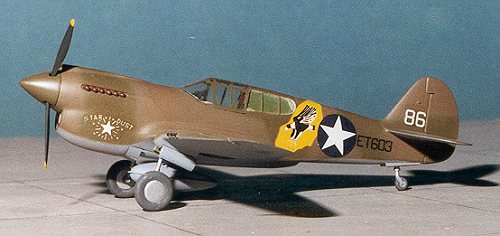 On these pages
are two P-40Es that were built about 10 years ago. One is American and the other
Canadian. The US version is built straight from the box using kit decals. This
is one of the options given with the boxing shown in the box art above. It is
for a P-40E of the 49th Fighter Group at Darwin, Australia and later Port
Moresby, New Guinea in 1942. It is in a scheme of Olive Drab and Medium Green
upper surfaces with Neutral Grey lowers. All the colors on this one were via
Gunze Sangyo acrylic paints that I was using exclusively at the time. There was
no clear coat put on prior to the decals and the decals held up very well. Most
P-40Es did not have a radio mast, so it is a good thing that the one on the kit
was knocked off over the years!
On these pages
are two P-40Es that were built about 10 years ago. One is American and the other
Canadian. The US version is built straight from the box using kit decals. This
is one of the options given with the boxing shown in the box art above. It is
for a P-40E of the 49th Fighter Group at Darwin, Australia and later Port
Moresby, New Guinea in 1942. It is in a scheme of Olive Drab and Medium Green
upper surfaces with Neutral Grey lowers. All the colors on this one were via
Gunze Sangyo acrylic paints that I was using exclusively at the time. There was
no clear coat put on prior to the decals and the decals held up very well. Most
P-40Es did not have a radio mast, so it is a good thing that the one on the kit
was knocked off over the years!
The second scheme is one of a Canadian squadron on the west coast. The scheme is RAF Green and Brown upper with Sky undersurfaces, tail band and spinner. Again, Gunze paints were used for this one. The decals are from an IPMS Canada set that was available many years ago. This particular sheet had four aircraft of 111 Squadron, all P-40s. This one was to me, the most interesting with the large totem pole marking, the underlined unit codes and the unusual upper wing roundels. The decals were just superb and fit with no problems at all!
|
CONCLUSIONS |
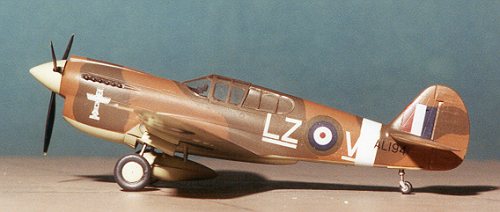 What can I
really add? This kit is highly recommended to all levels of modeler. The
beginner will delight in its ease of construction and the more 'mature' modeler
will revel in how quickly one can get the kit done and on the display shelf.
While there are oodles of aftermarket decals for this little beauty, I'm not
sure what else is available in the way of resin interiors, though I'd be
surprised if True Details didn't do wheels for it.
What can I
really add? This kit is highly recommended to all levels of modeler. The
beginner will delight in its ease of construction and the more 'mature' modeler
will revel in how quickly one can get the kit done and on the display shelf.
While there are oodles of aftermarket decals for this little beauty, I'm not
sure what else is available in the way of resin interiors, though I'd be
surprised if True Details didn't do wheels for it.
Review kits courtesy of me and my wallet, though they didn't take too big a bite!
If you would like your product reviewed fairly and quickly, please contact the editor or see other details in the Note to Contributors.
Back to Reviews Page 2024